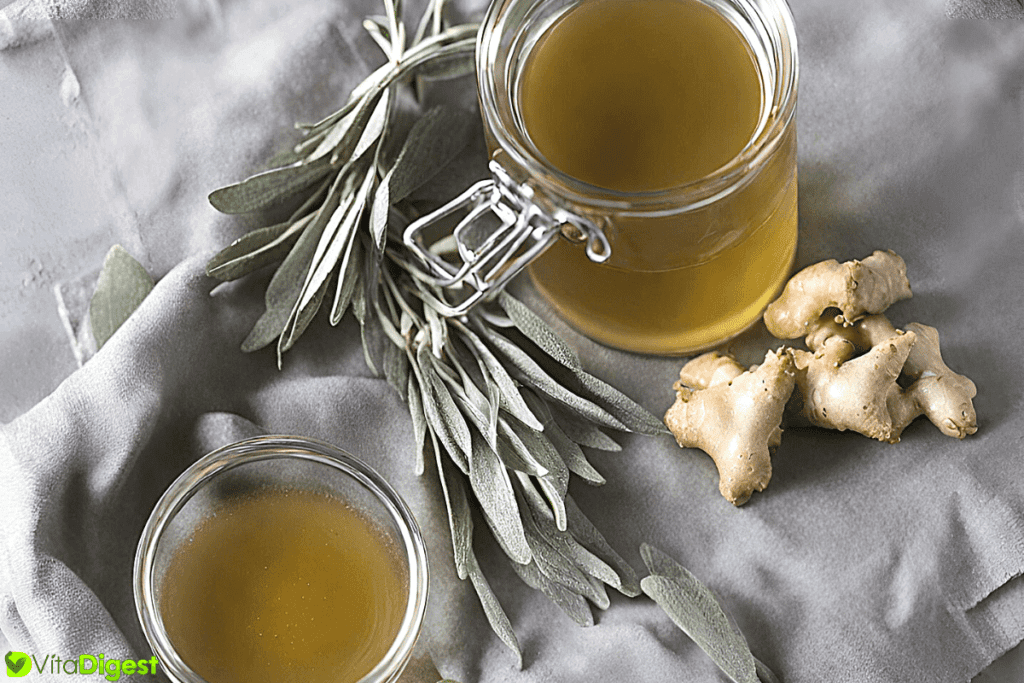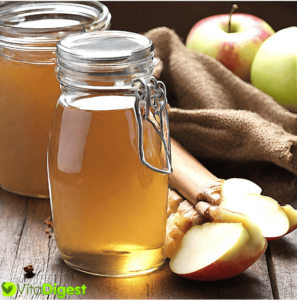Ever wondered what’s been used for centuries to soothe sore throats, calm coughs, and promote overall wellness? It’s oxymel, a simple yet powerful concoction of vinegar and honey. This age-old remedy is making a comeback, as it has been a go-to for those seeking natural relief from various ailments. We’ll explore its history, benefits, how you can make it at home, and why this ancient elixir is worth adding to your modern-day wellness routine.
What is Oxymel
Oxymel is an intriguing concoction that takes us back to the roots of medicinal history. It’s a sweet-and-sour syrup, primarily composed of vinegar and honey. The name originates from ancient Greek, where “oxy” refers to sharp or acidic, while “mel” stands for honey.
The tradition of using oxymel dates back to Hippocrates and even before. Our ancestors recognized the healing abilities of these two simple yet powerful ingredients and merged them into a single potion. The versatility allows us to use oxymel not only for health benefits but also as an additive to our food and drinks.
Honey in its raw form is a powerhouse of antioxidants, offering anti-inflammatory and antibacterial properties. It’s a pure, unrefined sweetener that aids digestion, soothes the throat, and even assists in wound healing. Vinegar, on the other hand, is a well-established antimicrobial that also aids digestion, and depending on the type, provides additional health benefits.
When we combine these two, it becomes a multifunctional syrup serving many purposes, from a health tonic to a flavorful culinary ingredient.
Health Benefits of Oxymel
To understand why oxymel has been lauded for its health benefits for generations, let’s delve deeper into what makes this unassuming natural remedy a powerhouse of healing and wellness.
Digestive Health
Long before probiotic supplements became mainstream, people were harnessing the healing properties of vinegar and honey to promote good digestion. Oxymel’s unique composition promotes healthy bacterial balance in the gut improving our body’s nutrient absorption capability.
It also aids digestion by helping break down food, easing heartburn, and reducing bloating. It’s these restorative features of oxymel that keep our digestive system purring.
Immune System Boost
Our immune system is our first line of defense against seasonal bugs and harmful bacteria. Ingredients like honey and vinegar – key components of Oxymel – are known immuno-boosters. Honey, known to be antiviral and antibacterial, can naturally boost our body’s resistance to infections.
Simultaneously, vinegar’s high acetic acid content helps to improve lymphatic drainage and make our body’s alkaline/acidic balance. This combination in oxymel makes it an effective immune system enhancer.
Balancing Blood Sugar

One of the most overlooked benefits of oxymel is its ability to stabilize blood sugar levels. Recent studies have pointed to the role of vinegar in modulating glucose levels in our bloodstream.
Vinegar’s antiglycemic property slows down the digestion of carbohydrates leading to a more moderate blood sugar response post meals. Honey too possesses a relatively lower glycemic index than sugar contributing to maintaining healthier sugar levels.
By regular and mindful consumption of oxymel, we might achieve improved digestion, adequate immune response, and balanced blood sugar levels in natural and sustainable ways. It’s a testament to how age-old wisdom can continue to hold relevance in our modern well-being routines.
How to Make Oxymel
Harnessing the health benefits of oxymel begins in our kitchen. It’s incredibly easy to make and requires only two primary ingredients: honey and vinegar. Understand that the quality of these ingredients directly influences the efficacy of the finished product. Hence, we advise using raw, unprocessed honey and organic, unpasteurized apple cider vinegar for the best results.
Start by combining two parts honey with one part vinegar in a clean, sterilized jar. Stir the mixture thoroughly until it’s well mixed. If a more diluted mixture is preferred, use equal parts of honey and vinegar. Seal the jar and let it sit in a cool, dark place for at least a couple of weeks.
During this time, the vinegar and honey will blend together perfectly. The longer the concoction is left to meld, the smoother and more balanced the taste. After about two weeks, give it a taste test. If it’s to your liking, strain it through a cheesecloth to remove any potential residue or impurities.
Transfer the clear oxymel into a fresh sterile jar or bottle for storage. It can be stored in the refrigerator for an extended period, and a teaspoonful can be taken daily.
Here’s the easy-to-follow recipe for your reference:
Ingredients
- 2 Parts Raw, Unprocessed Honey
- 1 Part Organic, Unpasteurized Apple Cider Vinegar
- Combine honey and vinegar in a sterilized jar.
- Stir until well mixed.
- Seal the jar and let it sit in a cool, dark place for at least two weeks.
- Strain the mixture through a cheesecloth.
- Transfer oxymel into a sterile storage bottle.
Oxymel Recipes
Beyond the traditional blend of raw, unprocessed honey and organic, unpasteurized apple cider vinegar, there are indeed countless ways to enhance an oxymel’s flavor profile and increase its health benefits. Activities range from adding herbs, fruits, spices, and even edible flowers.
Herbal Oxymel
For an extra therapeutic kick, why not add herbs to our vinegar-honey combo? A classic choice would be echinacea, noted for its immune-boosting properties. Garlic and turmeric are solid picks for their antibacterial and anti-inflammatory attributes, respectively.
Ingredients needed:
- 1 cup raw apple cider vinegar
- 1 cup raw honey
- 1 cup of your chosen herb
Instructions:
- Gently bruise the herbs to release their natural oils.
- Mix the apple cider vinegar, honey, and herbs together in a jar.
- Seal the jar tightly and allow it to steep for about two weeks.
- After steeping, filter the mixture using a cheesecloth and transfer it to a storage bottle.
Remember that when selecting herbs, it’s crucial to ensure they’re either organically grown or wild and free from pesticides.
Fruit Oxymel
Adding fruits to our oxymel not only intensifies its taste but also heightens its nutritional value. For instance, berries have high antioxidant levels, while citrus fruits have a high vitamin C content.
Ingredients needed:
- 1 cup raw apple cider vinegar
- 1 cup raw honey
- 1 cup of your selected fruit (apples)
Instructions:
- Slice or squish the fruit to expose more surface area.
- Combine the vinegar, honey, and fruit in a jar.
- Allow the blend to sit for about two weeks before straining it and transferring it to a storage bottle.
Utilizing ripe fruits would boost the oxymel’s sweetness.
Spiced Oxymel

Why not introduce a spicy kick to our oxymel? Spices like ginger and cinnamon don’t just offer a unique warmth and flavor; they also support digestion and help regulate blood sugar.
Ingredients needed:
- 1 cup raw apple cider vinegar
- 1 cup raw honey
- 1 cup of your preferred spice (cinnamon)
- Coarsely grind the spices.
- Incorporate the vinegar, honey, and spices in a jar, and seal it tightly.
- Let the concoction do its magic for two weeks before straining it and transferring it to a storage bottle.
One handy tip: always use fresh, not age-old spices from the back of our pantry!
Tips for Using Oxymel
Incorporate into daily meals: Oxymel can become a part of your daily diet with ease. Place a few drops into your favorite salad dressing or marinade. We guarantee it’ll enhance your meal’s flavor in the tastiest way possible, while also blessing it with abundant health benefits.
Use as a detox drink: A popular way to consume oxymel is by sipping it in a diluted form as a detox drink. Take a cup of warm water; add an adequate amount of the mixture, stir gently and there you have a soothing, nutritious, detox drink.
Editors Note: Pay heed to the quantity you consume each day. Too much vinegar in your diet can lead to acid reflux and stomach discomfort. We encourage you to monitor your body’s reaction to oxymel and adjust the quantity accordingly.

